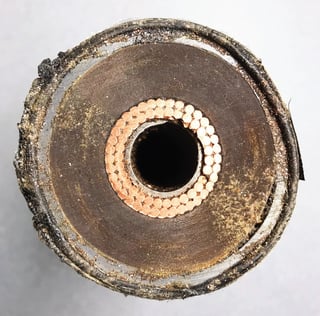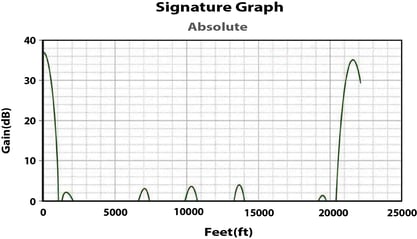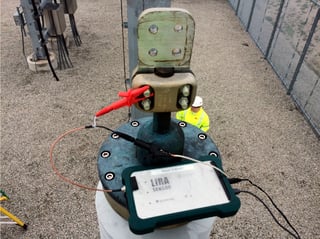By Bill Berger, Senior Vice President, Fauske & Associates
Background

Testing was performed on a 138KV transmission line using LIRA (LIne Resonance Analysis) which is a form of Frequency Domain Reflectometry (FDR) and Time Domain Reflectometry (TDR). There were six cables and each was 500 mcm, paper insulated lead covered (PILC) cable. A cross section of a removed portion of the cable is shown to the right. The circuit runs for about 4 miles underground. The test was performed as routine maintenance and results were compared to baseline testing.
Results
The figure below shows the signature plot for one of the six cables. This plot was developed from the impedance as a function of frequency measured by LIRA. The signature plot was then normalized to account for the attenuation which occurs in the cable. The plot shows the beginning and end reflections and those in between show the location of known cable splices and directional changes in the cable routing. This signature plot does not show any increased amplitude reflections compared to the baseline signature plot indicating that the cable has not degraded. In addition, cable impedance and phase angle, along with the resonance points, were investigated.


For more information on cable testing, cable health, cable aging, please contact us: info@fauske.com (630) 323-8750 www.fauske.com

